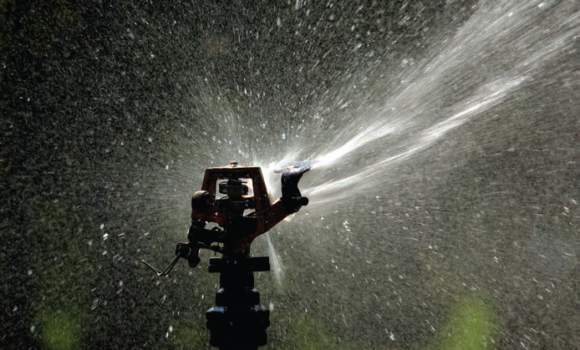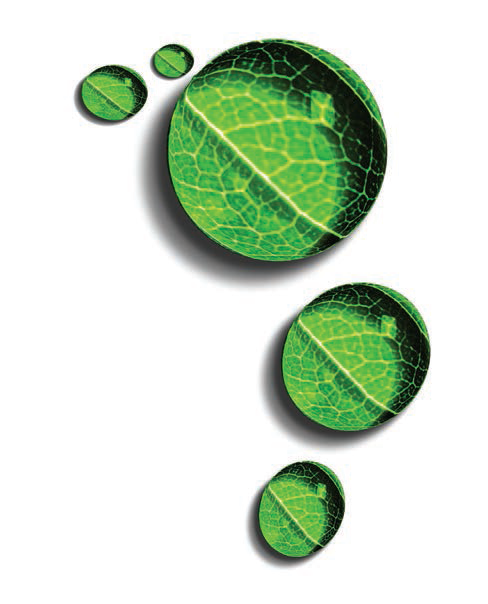Paul Kunkels, owner and operator of Irritec, traces the lines of irrigation history and provides some insightful guidance on how to make the right decisions about water use and conservation
Irrigation has been defined as assisting in the growth of agricultural crops, maintenance of landscapes, and re-vegetation of disturbed soils in dry areas and during periods of inadequate rainfall.
As a practice, it has been around for eons. The ancient Egyptians used flood irrigation to grow wheat in the desert, as far back as 1800 BC. Terrace irrigation has been used in Pakistan and India since 4000 BC for crop production. Sophisticated underground water storage and transfer canals constructed up to 5000 years ago are still in use today. The oldest known hydraulic engineering took place in China, where vast irrigation canals, chain pumps and rock drillings were constructed about 6000 BC. The largest scheme was constructed in 250 BC and is still in use today.
While Irritec may not have been around to assist in the construction of early Chinese civilisation, we’ve been operating for the last 40 years, which makes us nearly as old as Ireland’s contemporary nursery sector. Over that time we’ve witnessed and been part of huge shifts in irrigation use and emphasis. And while irrigation has always been used for nursery stock, garden centres and for protected crop production, its use has grown, and now includes;
● Growing food, both protected and fi eld production
● Plant production for leisure purposes – nurseries and garden centres
● Keeping gardens healthy and freeing up time for other activities
● Maintaining landscapes for municipal and amenity use
● Keeping sports fields (grass and artificial) in optimum condition
● Frost protection – sprinklers are used to coat apple tree blossom with water during spring frosts, which prevents the blossom getting frost burn
● Mining – sprinklers are used to wash alluvial soil and gravel from valuable metal deposits ● Dust suppression – large throw sprinklers trap wind-borne dust particles in quarries
● Percolation – drip and flood subsurface irrigation is used to distribute wastewater
CHANGING ENVIRONMENT,
CHANGING DEMAND,
CHANGING REQUIREMENTS
There are many factors that have changed the nature of irrigation provision in Ireland. Increased urbanisation has produced drier environments, increased rain shadows, soil and weight restrictions which all negatively impact plant growth, especially in the establishment phase. For many urban schemes, irrigation is a must rather than an option. Another factor in the increased use of irrigation is the demand for instant gardens. Larger plants are being used in garden construction and they demand far more water to successfully establish. Shifts away from the ‘traditional planting period’ to all year round planting have also necessitated greater consideration to water provision. On top of this, climatic shifts towards longer spells of dry weather and rainfall events or deluges have had a big impact of plant growth. It could also be posited that people simply don’t like to water anymore and would prefer systems that do it for them. This has certainly directed much of our domestic work.
Looking to the future, you can be sure of one thing: water is going to become scarcer as the world population grows. Already several countries insist on commercial growers harvesting rainwater during the winter, for use during the summer. All irrigation runoff has to be collected and re-used, to prevent fertilisers entering the groundwater. This policy will most probably be implemented by other countries, to help preserve dwindling water supplies.

TYPES OF IRRIGATION SYSTEMS USED IN IRELAND
In Ireland, practically the full range of irrigation types is in use. We have installed a diverse range of systems over the years, some of the most interesting were:
● Several thousand metres of drip irrigation for Dundrum Town Centre
● Large irrigators with 40m wide booms to irrigate a large tree nursery
● Mist nozzles in the top of atrium tree planting to cool the trees down
● Pop-up sprinklers to keep a well-known pitch in top condition ● Sprinklers to keep the Turlough Hill reservoir liner cool during the summer. Without this 1.6km line of sprinklers, the liner is in danger of being damaged by the sun
● Drip irrigation on vertical wall gardens
● Hydroponics for commercial vegetable production
WATER SAVING DEVELOPMENTS
Water is viewed as a cheap resource, but not for long. If you are using mains water, you will be charged for all that you use in the coming years. You can install a deep well and pump, which is initially expensive but will give you free water from then on. Rainwater can also be taken from roofs, as long as it is stored and filtered correctly, it can safely be used for irrigation and for flushing toilets.
Water pumps are developing to make them more energy-efficient, technology developed for home heating pumps – low friction motors – is now being used. Variable speed drives, which cut energy use by 50%, which used to be only found on very large pumps, are now available on much smaller units, well within parameters for what a small nursery of grower would need.
“If not controlled correctly, irrigation systems can be wasteful of water. To combat this, modern irrigation systems employ rain and soil moisture sensors to irrigate only when required”
Solar-powered equipment is becoming more common, with irrigation control panels and pumps in widespread use in sunnier regions. I first used this equipment a few years ago but did not think that it was suitable for Ireland. Since then, the efficiency of solar panels has significantly improved and now this technology in Ireland. Three years ago, we installed a wind/solar powered pump to supply water to a large allotment scheme. So far, the system has given no trouble and has not cost a single cent to operate.
There are also small solar-powered pumps especially for water butts, ideal for watering the garden or connecting onto a small irrigation system, controlled with a battery-powered timer.
If not controlled correctly, irrigation systems can be wasteful of water. To combat this, modern irrigation systems employ rain and soil moisture sensors to irrigate only when required. If combined with highly accurate nozzles, drippers and an energy-efficient pump, a modern system will save your water, energy and your money.
Rainwater is great for plants, as it is generally ph neutral and naturally soft. Irritec has diversified over the years, but our core business has always been irrigation and water management. We work closely with the industry’s top suppliers in order to keep up with the latest developments, technology and trends. Between my two companies, Irritec and Rainstore, we have all bases covered. ✽
KEY CONSIDERATIONS WHEN PLANNING AN IRRIGATION SYSTEM
|
KEY CONSIDERATIONS WHEN PLANNING A WATER HARVESTING SYSTEM
|
 PAUL KUNKELS is the owner and operator of Irritec, Ireland’s leading supplier and installer of irrigation and water harvesting systems and technology. PAUL KUNKELS is the owner and operator of Irritec, Ireland’s leading supplier and installer of irrigation and water harvesting systems and technology.
He can be contacted via paul@irritec.ie, www.irritec.ie or www.rainstore.ie |





